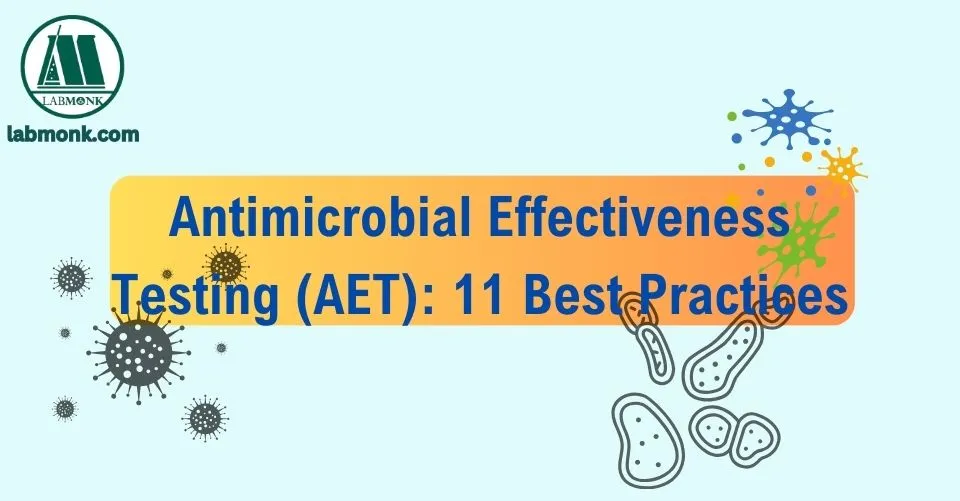Table of Contents
What Kinds of Products Need a USP Preservative Efficacy Test?
There are four different categories of products that need USP 51 testing. The criteria for every product category depends on the route of administration of the product.
Here is a table that describes all four categories of products:
| Product category | Product description |
| 1 | Injections, emulsions, sterile nasal products, ophthalmic products made with aqueous bases, otic products. |
| 2 | Topically used products that is made with aqueous bases, non-sterile masal products which also includes those that are applied to mucous membranes. |
| 3 | Oral products except antacids made using aqueous base or vehicles |
| 4 | Antacids made from aqueous base |
11 Best practices for antimicrobial efficacy testing
Here are a few relevant tips for carrying out an antimicrobial effectiveness test
1.Go through your SOP
Before starting the procedure, it is important to go through the whole lab procedure for the USP 51 antimicrobial effectiveness testing. Check whether or not you have all the supplies that you need.
2.Check all equipment
See whether the maintenance, calibration and performance certification are up-to-date for the equipment that you will use or not. It also includes equipment like thermometers, incubators, densitometers and spectrophotometers. Is there any requirement to order new controls for your densitometer or the spectrophotometer? Also, check the expiry date of all the controls.
3.Make sure the media used in the product supports microbial growth
Before using any media, it must pass the growth promotion test. As per United States Pharmacopeia, the CFU counts on Tryptic Soy Agar and Sabouraud Dextrose Agar should be a minimum of 50% of the estimated value for a standard inoculum. In case the inoculum is freshly prepared, produces growth compared to that which is seen on media that has been tested previously and is approved.
4.Make use of QC strains as per the guidelines for AET
The suggested strains can be found in the guidelines that you are following. The QC strains must be purchased from a national culture collection or eligible secondary supplier. They must be easily traceable also and not more than five passages from a national culture collection. You should store all your controls as per the instructions given by the manufacturer and should not use them beyond their expiration date.
5.Study with extra strains
Think of any possible species that can contaminate your product. You can test with those strains too.
6.Train all personnel who are not experienced in testing
An experienced person must perform the antimicrobial efficacy test method. So, if anyone is inexperienced in your team, explain to them why the test is done and show them how to perform.
7.Carry out method suitability tests
Before you start your AET test, you should do the method suitability test. This is to prove that it is possible to recover the microbes from the product if they are present. In the test, equal volumes of the product along with a positive control like saline are injected with an equal inoculum of microbes. Then the same volume from the product and the control are transferred to agar.
The Number of CFU recuperated on agar from the product must be within 50% of the number that is recovered from the control. If in case the recovery is less than 50%, then a neutralizing agent is required to overcome the effect of the antimicrobial on the microbes.
8.Measure the initial inoculum concentration
After the product is inoculated with microbes, you must test it several times, like 7 days. 14 days and 28 days. Compare the values after 7, 14 and 28 days. This is the reason it’s important to measure the initial microbe concentration that is added to the product.
9.Do validation
For the very first time a product undergoes product effectiveness testing, it’s important to validate that the microbes can sustain the formulation. Other than that it’s vital to revalidate the product whenever there is a change in formulation, or change in manufacturing process or packaging change.
10.Know about the quantity of product needed
If the product is in its liquid form, then a volume of a minimum of 20 ml is needed. If it’s in granular or powdered form, then a weight of 20 grams is needed. Validation of these products needs an extra 100 ml or grams.
11.Do the test in a reliable lab for best results
Because of the complicated nature of the neutralization, inoculation and recovery in antimicrobial effectiveness testing USP, it is necessary to do the test in an eligible lab with previous records of successful Antimicrobial effectiveness tests.
The lab must be acquainted with microbial recovery and promotion of growth of microbiological media that is used in the study. A microbiologist who has experience in carrying out AETs can offer an efficient interpretation of the generated data. The relevant data collected from AET studies offers strong insights about product formulations and helps in assuring the safety and effectiveness of the product.
We share different jobs or exam notices on Labmonk Notice Board.
Click the page numbers below to read more on this topic.

